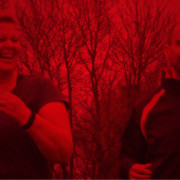Should I Do a Cool-Down After a Run & Why Do I Feel Dizzy After Racing?
The short answer to both of these questions is yes, you should do a cool-down. Cooling down after a hard session, race or realistically, any exercise, helps with the recovery process. It allows your body to get back to, or certainly closer to, it’s normal resting state more gradually instead of finishing quickly and then suddenly stopping. This will keep the blood circulating with the lower intensity finish and help to clear the metabolic waste products of exercise (lactic acid, etc). It also prevents the pooling of blood in the legs because your blood pressure is allowed to return back to normal and your veins can constrict.
Have you ever finished a race really fast, stopped after the finish line and suddenly felt dizzy? This is due to the sudden lack of muscle action when you stop suddenly. This is why keeping walking, or a slow jog is more beneficial and will help the blood return to the heart.
Here’s the science:
As you run, blood vessels dilate, muscles contract and the heart pumps faster in order to meet the energy demand of running. In addition to providing movement, these muscle contractions also serve to pump blood back to the heart, assisting with the venous return of blood flow. This pumping cycle helps meet the increased oxygen demand running requires.
When you cross the finish line and stop, the heart loses the pumping assistance of these muscles. With blood vessels dilated and no return pumping action, blood quickly pools in your extremities, causing your blood pressure to drop.
Also, your race effort typically means a faster run pace than a training run, and this increased intensity means a higher heart rate and an increase in sweating. Race effort also may mean a lower fluid intake during the race as you speed through water stations, pushing for a PB. This minimal fluid intake combined with heavy sweating results in lower blood volume, which means lower blood pressure.
It’s best to keep moving after crossing the finish line. Keep walking if possible, and, if not, pick up your legs like you are marching on the spot for several minutes. You can also contract your upper-body muscles by clenching your fists, or pressing the palms of your hands together.
Pick up water and a sports drink if possible at the finish and start drinking immediately to replace lost fluids and electrolytes. Also, wearing compression socks can assist with venous return to the heart, so you may want to consider giving them a try, even if you put them on after you finish.
If you do feel faint or dizzy, lie down immediately and elevate your legs. This helps the blood flow back towards your heart.
In my running training plans I always advocate at least half a mile (usually a mile or more) of easier intensity running to finish a session. In my one-to-one or group training sessions I will always incorporate a cooldown to ensure everyone leaves the session feeling great. All sessions also finish with some stretching.
Not only will this stave off blood-pooling, it will also make you feel better immediately (you don’t want to be hobbling around all day) but it will also help to stave off the dreaded DOMS (Delayed Onset Muscle Soreness). You know; the stiffness that appears the next morning and lasts for the following two to three days.
Remember, finish a training session with the next one in mind. Preparation for the next session always begins towards the end of the current one. Keep this in mind and you will be able to train more consistently, meaning you will get fitter, faster and healthier quicker than if you have to stop exercising while you recover from your last workout.
Want to know more about running, personal training or nutrition?
Contact me today to ask any questions or to book your FREE consultation
Call me on 07815 044521 or email me at martinhulbertpt@gmail.com







